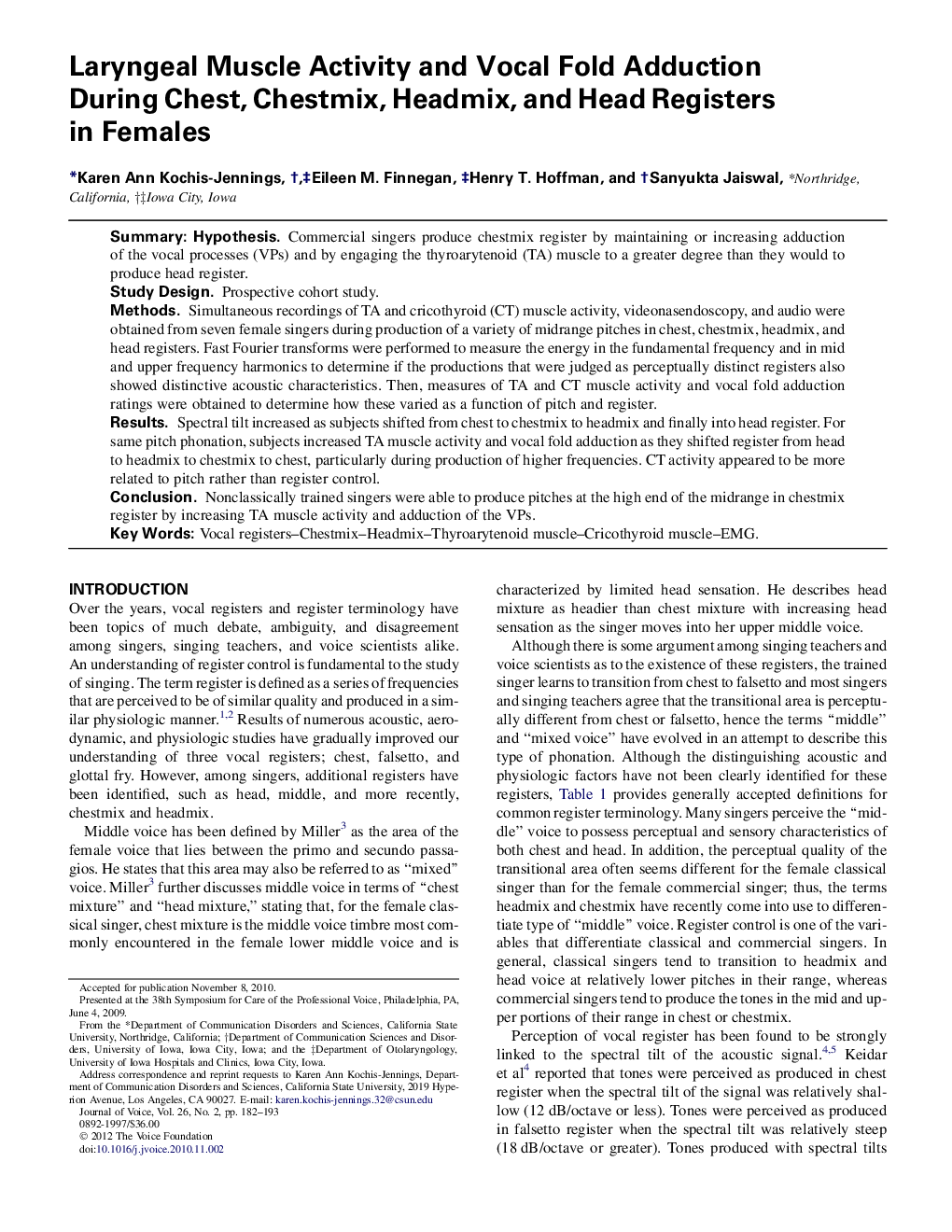| Article ID | Journal | Published Year | Pages | File Type |
|---|---|---|---|---|
| 1102267 | Journal of Voice | 2012 | 12 Pages |
SummaryHypothesisCommercial singers produce chestmix register by maintaining or increasing adduction of the vocal processes (VPs) and by engaging the thyroarytenoid (TA) muscle to a greater degree than they would to produce head register.Study DesignProspective cohort study.MethodsSimultaneous recordings of TA and cricothyroid (CT) muscle activity, videonasendoscopy, and audio were obtained from seven female singers during production of a variety of midrange pitches in chest, chestmix, headmix, and head registers. Fast Fourier transforms were performed to measure the energy in the fundamental frequency and in mid and upper frequency harmonics to determine if the productions that were judged as perceptually distinct registers also showed distinctive acoustic characteristics. Then, measures of TA and CT muscle activity and vocal fold adduction ratings were obtained to determine how these varied as a function of pitch and register.ResultsSpectral tilt increased as subjects shifted from chest to chestmix to headmix and finally into head register. For same pitch phonation, subjects increased TA muscle activity and vocal fold adduction as they shifted register from head to headmix to chestmix to chest, particularly during production of higher frequencies. CT activity appeared to be more related to pitch rather than register control.ConclusionNonclassically trained singers were able to produce pitches at the high end of the midrange in chestmix register by increasing TA muscle activity and adduction of the VPs.
